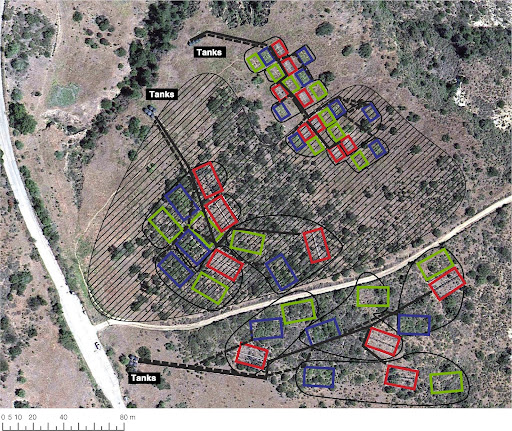The Loma Ridge Global Change Experiment (LRGCE) was established in 2006 to understand the impact of precipitation change, nitrogen (N) deposition, and fire on vegetation dynamics. Initiated by Dr. Michael Goulden and Dr. Katie Suding, the experiment includes 48 plots in grassland and coastal sage scrub habitats. These plots represent ambient conditions (16 plots), drought conditions (16 plots), and water addition (16 plots) with nitrogen added (6 g/m2/y) to half of each plot (Figure below). This experimental design has generated data on ecosystem responses to drought and nitrogen manipulation, including changes in microbiomes and biogeochemical rates.

Figure: Green rectangles are ambient plots, red rectangles are drought treatment plots, purple rectangles are added water treatments.
Previous and ongoing research at the LRGCE has uncovered the mechanisms that drive plant diversity and its influence on microbial diversity, provided data to understand microbial responses to environmental variation, and manipulated microbiomes to determine rates and mechanisms of adaptation to climate change. Researchers at the LRGCE are conducting research in four main areas:
Interactions between environmental drivers, microbiomes, and plant communities.
Responses of communities and ecosystems to climatic changes and extreme weather events.
Restoration and resilience of ecological processes following disturbance.
Management practices to mitigate impacts of multiple environmental changes on habitat quality.
